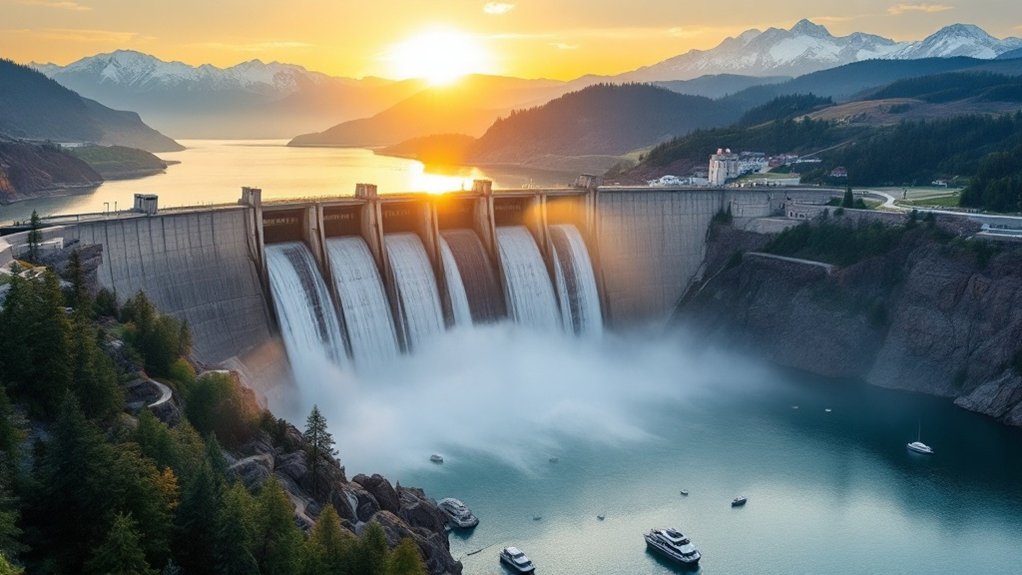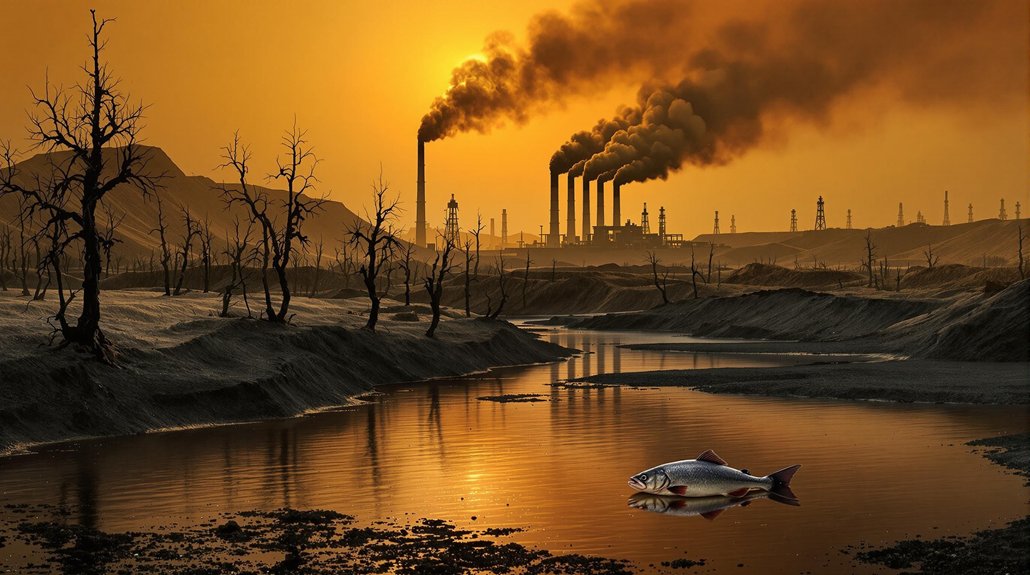Hydroelectric power packs quite the punch in the renewable energy world. These mighty dams convert rushing water into electricity with impressive 90% efficiency, running 24/7 unlike their fickle solar and wind cousins. Zero fuel costs and century-long lifespans make them economic powerhouses. Beyond electricity, they’re multitasking champions – controlling floods, supporting agriculture, and creating recreational hotspots. The deeper story of hydropower’s impact on modern civilization is just beginning to flow.

While many renewable energy sources come with significant drawbacks, hydroelectric power stands as a titan among clean energy options. When it comes to reliability, these massive water-powered giants deliver electricity 24/7, laughing in the face of intermittency issues that plague other renewables. And here’s the kicker – some of these facilities have been churning out power for over a century. Talk about staying power.
The economics are pretty spectacular too. Once you’ve built the dam, the fuel is literally free. No price fluctuations, no supply chain headaches, just water doing what water does best – flowing downhill. Over the next two decades, Canada alone is looking at $125 billion in investments and a million new jobs. Not too shabby for an “old” technology. Currently generating 16% of global electricity, hydropower has proven itself as a major player in the energy sector.
Free-flowing water powers profits – zero fuel costs and massive economic potential make hydroelectric dams a wealth-generating waterfall.
Let’s talk clean. Hydroelectric plants don’t belch smoke, spew toxins, or leave behind radioactive waste. They’re 90% efficient at converting water energy to electricity, which is frankly showing off. During operation, these facilities produce zero air pollutants and greenhouse gases. Zero. The creation of reservoirs provides excellent opportunities for recreational activities like fishing and boating.
And unlike some energy sources that shall remain nameless, hydro actually helps the environment in multiple ways. These water-powered workhorses aren’t one-trick ponies either. They control floods, provide irrigation for farming, and create massive recreational areas for people who enjoy not drowning while swimming.
Plus, they make rivers more navigable for shipping. It’s like getting a Swiss Army knife when all you asked for was a power plant. The technology keeps getting better too. Modern turbines are friendlier to fish, and new systems handle sediment more effectively. Engineers have even figured out how to reduce water contamination from lubricants. With 4,210 TWh of electricity produced in 2023, hydropower leads all renewable energy sources combined.
But perhaps the most impressive feature is hydropower’s flexibility. When electricity demand spikes, operators can ramp up production faster than you can say “grid stability.” During major outages, these facilities become literal lifesavers, providing essential backup power when everything else fails. In the world of energy production, that’s what you call a home run.








